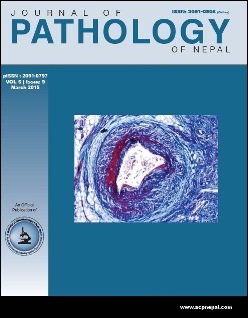Spectrum of skin adnexal tumors with eccrineand apocrine differentiation – A single institution study of 40 cases with clinicopathological correlation
DOI:
https://doi.org/10.3126/jpn.v5i9.13781Keywords:
Skin adnexa, Eccrine and Apocrine differentiation, Hidradenoma, Spiradenoma, CylindromaAbstract
Background: Adnexal skin tumors are relatively rare and present diagnostic difficulties in view of the endless morphological spectrum, complex nomenclature and incomplete knowledge of their histogenesis. Since pathologists encounter these lesions rarely, accurate sub classification of these can be challenging. This study intends to study skin adnexal tumors with eccrine and apocrine differentiation with emphasis on their histomorphology.
Materials and Methods:The present study is a five year retrospective study with comprehensive analysis of 40 cases of adnexal tumors of skin in a tertiary center in Karnataka, South India. These tumors were reclassified and subtyped according to WHO classification of skin tumors, 2006.
Results and analysis:Out the 62 cases of adnexal tumors studied, 40 were tumors with eccrine and apocrine differentiation (77% benign and 23% malignant). Hidradenoma was the most common tumor comprising 37% of all tumors and 45% of the benign tumors followed byspiradenoma, cylindroma and chondroidsyringoma respectively. Head and neck region was the most common site of occurrence, and seventh decade was the most frequent age group of presentation. A definite female preponderance was noted. Pagets disease of the breast was the most common malignant tumor in this group comprising (10%).
Conclusion: Histopathology is considered the gold standard in the diagnosis of these tumors and so a clear knowledge of the clinical presentation and histomorphology of these tumors is essential to make a correct diagnosis. A diagnostic logarithm based on histomorphology provides a logical approach in the subclassification of adnexal tumors.
DOI:
Downloads
Downloads
Published
How to Cite
Issue
Section
License
This license enables reusers to distribute, remix, adapt, and build upon the material in any medium or format, so long as attribution is given to the creator. The license allows for commercial use.




